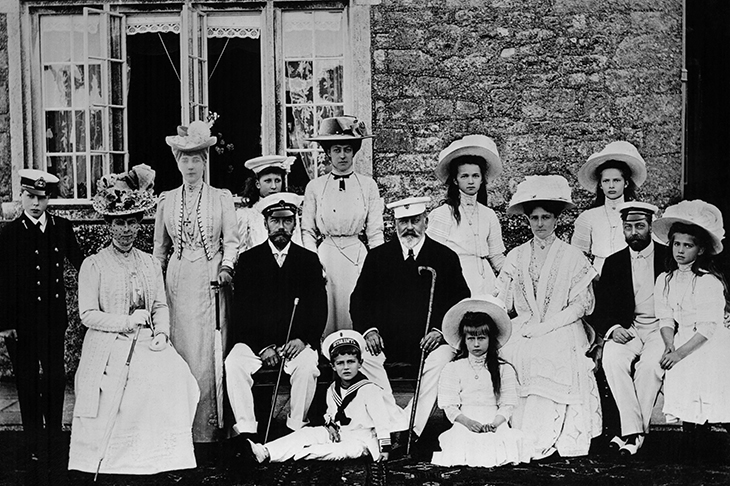First it was McMafia. After which it was the Skripals. Then the World Cup. Come the end of the year even Buckingham Palace is getting in on the act with a new exhibition, Russia: Royalty & the Romanovs (‘Through war, alliance and dynastic marriage the relationships between Britain and Russia and their royal families are explored from Peter the Great’s visit to London in 1698 through to Nicholas II’).This is the year we were all reminded of our close relationship with the Russians.
Some of us, of course, are more closely related than others. Lest we forget: Queen Victoria was the grandmother of Alexandra Feodorovna, Empress of Russia, and of King George V, the present Queen’s grand-father and founder of the House of Windsor; Prince Philip is the grandnephew of Alexandra and great-great-grandson of Nicholas I. Still with me? Basically, it means that William and Harry have more than a touch of the Romanovs about them: this surely explains Harry’s beard. Certainly nothing else does.
Frances Welch has long been explaining the Russians to the Brits. She is the author of, among others, Rasputin: A Short Life (2014), The Russian Court at Sea (2011) and The Romanovs & Mr Gibbes (2004), which tells the true story of how a bluff Yorkshireman ended up as tutor to the Russian royal family and which is one of those very special but sadly now out-of-print books that one occasionally picks up in second-hand bookshops and presses on friends and acquaintances, in the vague hope that it might one day arrive in the right hands and be made into a blockbuster movie, perhaps directed by Martin Scorsese and starring Tom Hardy as Sydney Gibbes. (Gibbes was a violent, weird outsider who became an Orthodox monk. I mean, come on! If you know Tom Hardy, tell Tom Hardy: this is a role made for Tom Hardy.)
In her ongoing quest to explore every possible highway and byway of royal Anglo-Russian relations, in The Imperial Tea Party Welch now tells the story of three encounters between the British royals and the Romanovs: a trip to Balmoral by the Tsar and Tsarina and their little baby Olga in September 1896; a meeting between the Tsar and Edward VII at Reval (now Tallinn) in June 1908; and a visit to the Isle of Wight by the Tsar, Tsarina and their five children in the summer of 1909.
The three encounters that Welch narrates are certainly intriguing and not without significance in historical terms, but what’s fascinating is her inimitable style and approach to the subject matter. Reading her books is rather like reading the novels of Ivy Compton-Burnett: accounts of rarefied, claustrophobic worlds, featuring strange, intense relationships, and with a strong tendency to wander conversationally from subject to subject, place to place and person to person. One moment you’re reading about the telegrams between Alexandra and Queen Victoria (who called her ‘Alicky’), the next moment, up pops Kropotkin, and then you’re suddenly on the quayside at Leith. You really have to be able to keep up.
The incidental details are what one remembers: the chain-smoking Nicholas, banished to the smokers’ room at Balmoral; the construction of a small village of stone huts to accommodate the Russian contingent in Scotland; Edward VII’s 48-inch waist (he liked to keep a cooked cold chicken next to his bed for snacking); Tatiana, the second daughter of the Tsar and Tsarina, struggling with seasickness en route to Cowes, and being strapped into a special chair with springs, which only made matters worse; the Romanov children buying up all the hairbrushes and perfume in Beken’s Pharmacy in Cowes, because they were in short supply in Russia.
The Imperial Tea Party is a book without any clear beginning, much muddle in the middle, and an inevitable end: we all know what happened to the Romanovs. But what happened to the Romanovs after what happened to the Romanovs is what’s important: the ties that continue to bind.
In 1998, just over 100 years after the imperial visit to Balmoral, the Royal Scots Greys, now known as the Royal Scots Dragoon Guards, escorted five members of the imperial family to their final resting place. The bodies of the Tsar, Tsarina, Olga, Tatiana and Anastasia, exhumed in the Urals at the start of the decade, were borne into the Peter Paul Fortress in St Petersburg, to the accompaniment of pipes and drums.






Comments